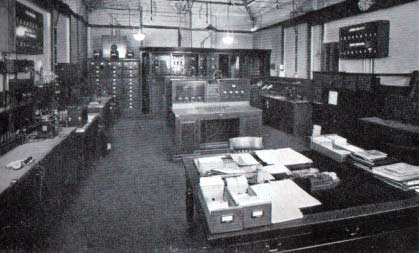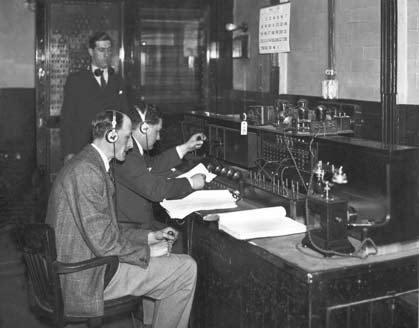Mike Chessher provides a short chronological guide to developments leading to the formation of the British Broadcasting Corporation in 1927.
1894
In 1894, the Electrophone Company in London provided subscribers with music, lectures and church services fed down the telephone. After 12 years there were still only 600 customers and it was not a technical or commercial success. Had it been so, I might now be writing about "electrophoning" rather than broadcasting. As it turned out, the telephone line as a broadcasting "platform" would have to wait another century for the development of the internet.
1904
For now, broadcasting would have to rely on the development of wireless transmission and there was a big advance towards this in 1904 when Professor J Ambrose Fleming invented the thermionic valve, paving the way from spark to continuous wave transmission and to wireless telephony. Also in 1904, the Post Office, careful to guard its communications monopoly, got in early with a wireless telegraphy act requiring "all who instal or work any apparatus" to obtain a licence.
1906
Meanwhile, on Christmas Eve 1906, Reginald Fessenden managed to avoid electrocution when he transmitted speech and music from Brant Rock, Massachusetts by "modulating" a spark produced with a 100kHz power supply. His broadcast was heard by a few surprised amateurs and ships operators.
Back at the valve, a number of scientists became involved in improvements and legal suits. In 1906, Dr Lee de Forest added a third electrode, thus creating the triode, and in 1913, Dr Alexander Meissner of Telfunken transmitted speech a distance of 37 km from Berlin using a valve oscillator. Development of wireless telephony continued with French military scientists producing an improved " R Type" triode in 1914/15. The crystal detector replaced the magnetic type.
1916
7th November 1916. Lee de Forest broadcast U.S. election results from New York.
1919
6th November 1919. Dutch experimental station PCGG began broadcasting from the Hague.
1920
January 1920. Long wave telephony transmitter (6 kW) installed at Marconi works in Chelmsford.
23rd February 1920. Daily news service from Chelmsford began. Post office licence permitted only two 30 minute transmissions per day.
15th June 1920. World's first live recital by a professional musician - Dame Nellie Melba sang "Home Sweet Home" and other songs using a carbon telephone microphone in Marconi's New Street, Chelmsford works. The broadcast was heard as far away as Iran and Newfoundland. (The power had now been increased to 15 kW.) Although the number of listeners began to increase, the station was closed down in the autumn of 1920 for "defence reasons" - it was said to cause interference.
2nd November 1920. The first American broadcasting station, KDKA in Pittsburgh, Pennsylvania began regular programmes.
1921
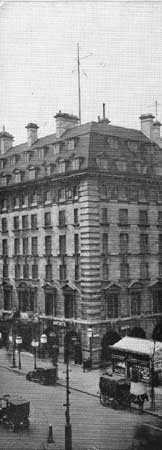
By March 1921, experimental amateur receiving licences had been granted to 4000 "men of good character". There were also 150 amateur transmitting licences but power was limited to 10 watts. The Postmaster-General eventually bowed to public pressure and issued a new broadcasting licence.
1922
14th February 1922. 2MT began transmitting from an ex army hut next to the Marconi laboratories at Writtle, near Chelmsford - but only 200 watts (initially on 700 m) and only on Tuesdays from 2000 - 2030 ! Nevertheless, "Two Emma Toc", in the phonetic alphabet of the day, was a great success. (2MT did not become part of the BBC and closed down on 17th Jan 1923)
11th May 1922. A second station (2LO) was allowed to broadcast for an hour a day from 7th floor of Marconi House (right) in London's Strand. (initially 100 watts on 350 m). It was allowed to transmit for 7 minutes, after which "the operator" had to listen on the wavelength for 3 minutes for possible instructions to close down.
16th May 1922. First transmission (not daily) from 2ZY at Metropolitan Vickers works in Manchester.
By now, there were over 50 (or by some accounts 200) stations operating in the USA.
18th May 1922. Talks began between the Post Office and the "big six" manufacturers (Marconi, Metropolitan Vickers, Radio Communication, Western Electric, General Electric and British Thomson-Houston). The post office wanted a consortium to run broadcasting to avoid American type "Chaos".
24th June 1922. First 2LO "concert" - pianist, cellist and singer. Candlestick telephone type mics still in use. The studio or "concert room" as it was at first known, was later draped with muslin and from time to time reverted to its original use as a trade cinema. Until the spring of 1923, this was the only studio. A 2nd room contained the transmitter and there was a battery room nearby.
18th October 1922. Agreement to form "The British Broadcasting Company" at a meeting between the Post Office and the manufacturers. The first 8 stations to be in London, Birmingham, Manchester, Newcastle, Glasgow, Cardiff, Aberdeen and Bournemouth. The "big six" would set things up and smaller firms in the industry would be invited to become share holding members.
1st November 1922. Annual ten shillings (50p) broadcast receiving licence introduced. (BBC to get 50% and a royalty on receivers). Some confusion and loss of BBC revenue caused by continuing to issue experimenters receiving licences.
14th November 1922. Nightly "BBC" programmes began from 2LO. Power had now been increased to 1.5 kW but there were no other changes. The BBC had no staff and had not even been registered as a company.
15th November 1922. Birmingham (5IT) and Manchester (2ZY) began daily programmes. The first childrens programme from 2ZY. The Birmingham transmitter had been hastily transferred to the GEC works from the Western Electric Company premises in London. It was praised for the sound quality from its microphone. This was almost certainly a Western Electric Type 373 using two carbon granule buttons.This was polling day in a general election and all three stations stayed on air until 1am to carry results phoned through from Reuters.
There had been protracted negotiations regarding news. A draft agreement had been reached that Reuters would supply a summary for use after 6 PM. This was dictated over the telephone to Marconi House and until the arrival of simultaneous broadcasting passed again by telephone to the other stations.
13th December 1922. Boards held for the first five BBC staff.
18th December 1922. John Reith (33) began work as General Manager. The first task was to find suitable offices and on the evening of the following day, he visited the I.E.E. building in Savoy Hill.
23rd December 1922. After futher discussions with Reuter, Press Association, Exchange Telegraph and Central News, the first "General News Bulletin" was broadcast but now to protect newspapers, there could be no news or live coverage of news or sport before 7 PM.
24th December 1922. Newcastle (5NO) station opened. This was the first station to have the studio and transmitter at separate sites. Unfortunately the line linking the Co-Op stable containing the transmitter to the studio a mile away was not ready for the scheduled opening on 23rd, although a transmission was made on that day from the stable yard.
30th December 1922. Temporary head office established in one room at Magnet House in Kingsway - Headquarters of G.E.C. (Most of the staff arrived on Mon 1st Jan!)
1923
8th January 1923. First OB on 2LO. Mozart's "Magic Flute" broadcast from Covent Garden using two Western Electric double button microphones and a 3 valve amplifier connected to a GPO landline. Fortunately the requirment to close down after every 7 minutes was lifted from this date but this also removed the frequent chance to shake up the carbon granules in the studio mics. However, the massive electrodynamic "Round" microphone made its first appearance about this time. It was much less noisy but required an enormous (6ft x 4ft x 2ft) 10 valve amplifier which was placed in what had been the projection room.
18th January 1923. BBC received its licence to broadcast from the Post Office !
13th February 1923. Cardiff (5WA) station opened.
6th March 1923. Glasgow (5SC) opened.
19th March 1923. 32 headquarters staff moved from Magnet House to 2nd floor at Savoy Hill.
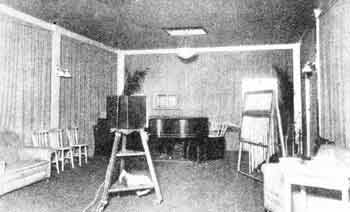
13th May 1923. First experiment in simultaneous broadcasting using a Western Electric PA amplifier to feed lines to the other stations caused severe disruption to trunk telephone traffic. Four days later, tests using much lower power amplifiers feeding each line were successful. OB and SB were combined on 30th May when the last act of Hansel and Gretel was relayed from Covent Garden and regular SB of news began on 29th August.
28th May 1923. First full length play (Twelfth Night).
August 1923. The Sykes committee, the first of many to investigate the BBC, recommended the end of the royalty on receivers and a single receiving licence of which the BBC should get three quarters.
10th October 1923. Aberdeen (2BD) station opened.
1924
By the end of 1923 there were nearly 600,000 licences. Big Ben was broadcast to usher in 1924 and a permanent line from a mic (Magnetophone) in the tower was in use from March 1924. Meantime, the Greenwich Time Signal was broadcast regularly (and sometimes to this day irregularly) from 5th Feb. 1924.
In January 1924, a new studio (44ft x 26ft) on the 1st floor at Savoy Hill came into service. This was less heavily draped than the original. There was no listening room, but a telephone cabinet equipped with headphones was placed in the studio.
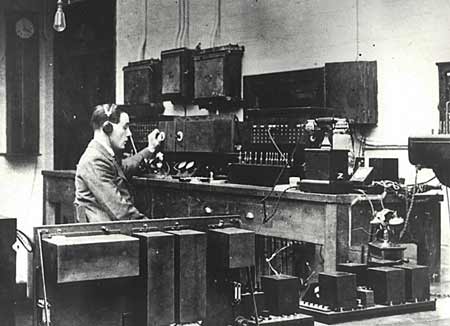
One of the first control positions, 1924
By May 1924, 150 staff occupied every available space in the I.E.E. building and in August, expansion began into the adjacent Savoy Hill Mansions, part of which had been destroyed in a Zepplin raid in 1917.
By the end of 1924, main stations had been added in Bournemouth and Belfast and there were 10 relay stations which had their own programmes for a few hours a week but otherwise SB'ed London.
1925
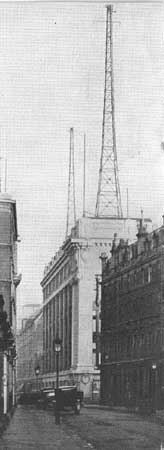
27th July 1925. New 25kW long wave transmitter (5XX) at Daventry said to reach 23 million listeners.
Autumn 1925. New drama studio opened on 2nd floor of Savoy Hill Mansions. On one side of the main studio was an effects studio and on the other an echo room, containing a mic which picked up sound directly from the main studio. In the effects studio was a tiny cabinet for the producer. A four channel mixer enabled him to mix sound from the main studio, the effects studio, the echo room and his own mic. Thus he could make announcements or during rehearsal, talk to assistants wearing headphones. (Until 1927, the mixer could only handle two sources at a time and by then two remote echo rooms with loudspeakers had been installed in the basement.)
In November 1925 the control room was extended to contain 4 control positions and the SB line system was gradually rationalised with lines to distribution points at Glasgow, Leeds and Gloucester. (There were also lines to Bournemouth, Nottingham and Daventry.)
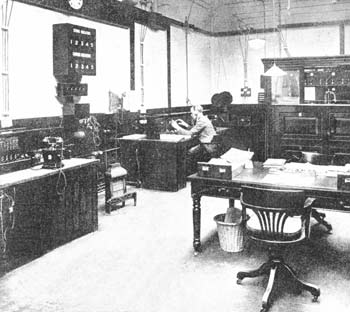
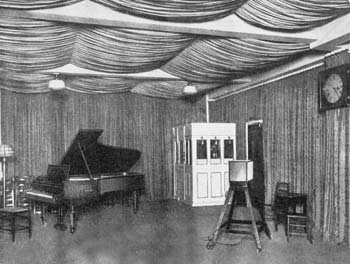
By the end of 1925, the Marconi-Reisz mic was in use and the red light and buzz back system between control positions and studios, familiar to generations of BBC operators, had been established.
1926
4th -12th May 1926. During the general strike, the news agreement was suspended and 5 daily bulletins prepared by the BBC were broadcast.
14th July 1926. Following investigations by the Crawford Committee, the PMG announced that a new Corporation was to be set up by Royal Charter.
August 1926. Studio 6 for talks and piano music was in service. This was given the appearance of a drawing room by using felt under wallpaper instead of drapes.
1927
1st January 1927. BBC became a public corporation. There were now nearly 400 staff at Savoy Hill, with a similar number at stations around the country and 2.2 million receiving licences. Within months as staff numbers continued to grow, the hunt was on for a new headquarters.
